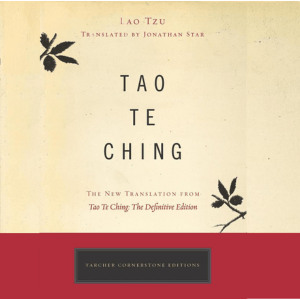Table of Contents
ToggleTao Te Ching: Ancient Wisdom for Balanced Living

The “Tao Te Ching,” attributed to the ancient Chinese philosopher Lao Tzu, is one of the most translated works in world literature. It has been a source of wisdom and inspiration for over two millennia, offering profound insights into the nature of existence and the art of living. The Tao Te Ching is a collection of 81 verses that explore the concept of the “Tao” (often translated as “the Way”) and its application to life, governance, and personal conduct. Written around the 6th century BCE, it remains relevant today for its insights into balance, simplicity, and harmony. This blog will provide a detailed summary and review, highlighting the key messages and learnings, and exploring the impact on readers.
Key Themes
Key themes in the Tao Te Ching include:
- The Tao (The Way): The central theme revolves around the Tao, an ineffable force that underlies all existence. It cannot be fully described or grasped intellectually but can be experienced through intuitive understanding.
- Wu Wei (Non-Action): The idea that true power lies in effortless action, aligning with the natural flow rather than forcing outcomes.
- Simplicity: Emphasizes simplicity, humility, and living in harmony with nature, i.e. valuing humility over pride and arrogance. Embracing a simple and unadorned way of living. Leading by example and with minimal interference.
- Paradoxes: The text is filled with paradoxical statements that challenge conventional thinking and understanding and accepting the dualities of existence.
Tao Te Ching: Summary and Review
Chapter 1: The Way That Can Be Told
The opening chapter sets the tone for the entire book. Lao Tzu introduces the concept of the “Tao,” or “Way,” which cannot be fully described or understood through words. It transcends human understanding and is beyond linguistic expression. This ineffable nature of the Tao underscores the limitations of human language and the importance of experiencing the Tao directly.
Chapter 2: The Paradoxes of Life
Lao Tzu explores the duality of existence, emphasizing that opposites define each other. Concepts like beauty and ugliness, good and bad, are interdependent and cannot exist without their counterparts. When people see some things as beautiful, other things become ugly. Dualities exist, but they are interconnected and interdependent. Embrace both sides without judgment and find balance in the interplay of opposites, as they are essential for understanding the whole. Embracing this duality helps one achieve balance and harmony.
Chapter 3: Governing Without Interference
This chapter advises leaders to govern by not interfering too much. By doing less and allowing things to take their natural course, harmony is achieved. It advocates for leading with patience, humility, compassion, and by example rather than through force or coercion. Leaders who align with the principles of the Tao can create harmonious and productive environments.
Chapter 4: The Infinite Nature of the Tao
Lao Tzu describes the Tao as an empty vessel that is inexhaustible, highlighting its infinite and boundless nature. The Tao is limitless and ever-present, providing endless possibilities. The Tao is an infinite source of wisdom and guidance. It is constantly available to those who seek it, and its resources are never depleted.
Chapter 5: The Impartiality of Nature
Nature is impartial and treats all things equally, like straw dogs used in rituals and discarded. This chapter teaches the importance of aligning with the natural world. Nature is impartial and non-judgmental; align with its ways to find balance. The natural order of the universe treats everything and everyone equally. It encourages us to cultivate a sense of impartiality and embrace the inherent equality of all beings.
Chapter 6: The Spirit of the Valley
The Tao Te Ching often highlights the value of feminine qualities such as receptivity, softness, and nurturing. Lao Tzu uses metaphors like the “Valley Spirit” to emphasize the importance of the feminine aspect in sustaining life. Lao Tzu speaks of the Valley Spirit, an eternal, life-giving force. It represents the source of life and embodies the qualities of compassion and intuition.
Chapter 7: Selflessness and Longevity
By putting others first and acting selflessly, one aligns with the Tao and achieves longevity. Selflessness leads to a fulfilling and enduring life.
Chapter 8: The Highest Good
Lao Tzu likens the highest good to water, which benefits all things without striving and seeks the lowest places. Water is soft yet powerful; it adapts to any situation. It teaches us to cultivate flexibility, adaptability, humility and selflessness.
Chapter 9: Moderation and Contentment
This chapter warns against the dangers of excess and advises contentment with what one has. Excess leads to ruin; moderation and contentment bring peace. Moderation is key to maintaining balance and harmony in life. Excess and overindulgence can lead to negative consequences and loss of effectiveness. This chapter promotes a balanced lifestyle and contentment.
Chapter 10: Cultivating Inner Virtue
Lao Tzu outlines the qualities of a sage, emphasizing inner virtues such as patience, compassion, and humility. Knowing others is wisdom; knowing yourself is enlightenment. Self-awareness leads to true understanding. Seek inner wisdom. Cultivate inner virtues to align with the Tao. The chapter encourages the reader to cultivate mindfulness and return to the state of original oneness. It emphasizes the power of focus and concentration in attaining inner peace.
Key Learnings from the Tao Te Ching
- Embrace Simplicity and Humility: The Tao Te Ching emphasizes the importance of living simply and humbly. By letting go of desires and ego, one can align more closely with the Tao. Be true to your nature and avoid pretense.
- Find Balance in Dualities: Life is full of contradictions, and wisdom lies in accepting them. Understanding and accepting the dualities of life—such as joy and sorrow, success and failure—helps in achieving inner harmony.
- Practice Non-Action (Wu Wei): The concept of Wu Wei, or effortless action, is central to the Tao Te Ching. It teaches that the best actions are those that align with the natural flow of the universe.
- Lead by Example: Lao Tzu’s advice for leaders is timeless. True leaders inspire and guide by embodying the principles of the Tao, rather than through force or coercion.
- Value Inner Virtues: Cultivating qualities like patience, compassion, and humility is essential for personal growth and alignment with the Tao.
Impact on Readers
The Tao Te Ching, through its poetic verses and profound insights, offers a transformative experience for readers. It challenges conventional thinking and encourages a deeper, more intuitive understanding of life. By promoting values such as humility, simplicity, and compassion, it has the potential to profoundly impact personal development and leadership styles. Its teachings can help individuals align more closely with their true nature and live more harmonious and fulfilling lives.
Conclusion
Tao Te Ching, with its profound wisdom and timeless teachings, offers a transformative journey into self-discovery and understanding. The book’s exploration of the Tao, duality, equality, and the power of humility provides readers with valuable insights for living a balanced and fulfilling life. By embracing the key messages and learnings from each chapter and verse, readers can unlock a deeper understanding of themselves and their place in the universe.
“Tao Te Ching” offers timeless insights that resonate across cultures and generations. It invites readers to explore the profound simplicity of the Tao and discover their own inner wisdom.
For those interested, you can find the book on Amazon here.
FAQs: Tao Te Ching: The New Translation by Jonathan Star
1. What is the Tao Te Ching?
Answer: The Tao Te Ching is an ancient Chinese text attributed to the sage Lao Tzu. It is a foundational work of Taoist philosophy, comprising 81 short chapters that explore the nature of the Tao (the Way), leadership, and the principles of living a balanced and harmonious life.
2. Who was Lao Tzu?
Answer: Lao Tzu, also known as Laozi, is a semi-legendary figure believed to have lived in the 6th century BCE. He is traditionally considered the author of the Tao Te Ching and a central figure in Taoism. His teachings emphasize simplicity, humility, and living in harmony with the Tao.
3. What is the Tao?
Answer: The Tao, often translated as “the Way,” is a fundamental concept in Taoism. The Tao is ineffable and cannot be fully expressed in words, but it can be experienced through living in accordance with its principles.
4. What is unique about Jonathan Star’s translation of the Tao Te Ching?
Answer: Jonathan Star’s translation of the Tao Te Ching is noted for its clarity and accessibility. He aims to preserve the poetic nature of the original text while making it comprehensible to modern readers. His work includes extensive notes and commentary that provide additional context and interpretation.
5. How is the Tao Te Ching relevant to modern readers?
Answer: The Tao Te Ching’s timeless wisdom offers valuable insights for contemporary life. Its teachings on simplicity, humility, balance, and leadership are applicable to personal growth, professional development, and spiritual practice. The text encourages readers to find harmony within themselves and with the world around them.
